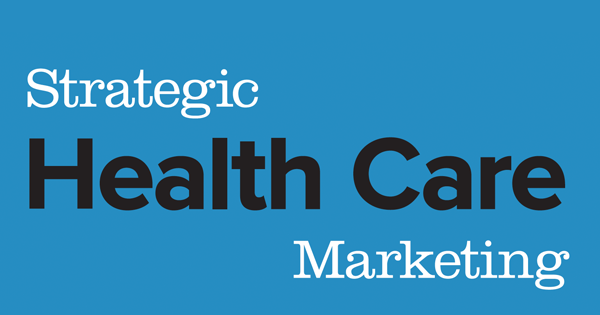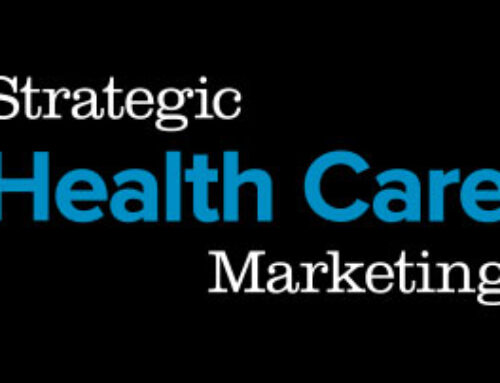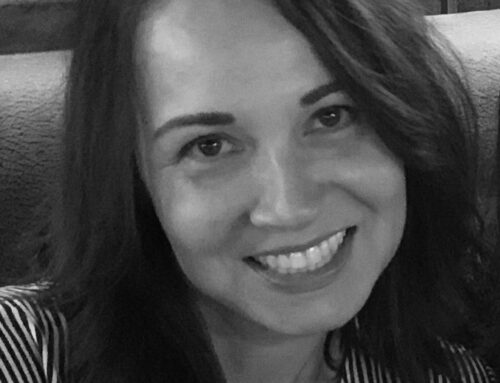It has been said that all motion is relative. If that is indeed true, then it’s entirely possible to go backwards by simply standing still if the world around you is changing.
Over the past half-dozen years, those entrusted with health care communications have pushed forward by focusing a good deal of energy on creative new ways to communicate with a digitally-minded, increasingly mobile and highly demanding consumer. But focusing so much consideration on the medium has turned the message into an ignored orphan needing its share of attention, as well.
Getting Into the Game
Too often we submit to the temptation of continuing to communicate the same comfortable messages we have for years. And when we do dare to venture into uncharted territory, we find ourselves focused on issues meaningful to us but of relative unimportance to the average consumer. This can’t continue much longer … nor should it. Increasingly, consumers will demand answers to tough questions that matter to them, and hospitals can no longer sit on the sidelines.
Five Ways to Lead the Charge Moving Forward
Taking the lead in this new era of transparent communications will take moral courage—a rarer commodity than bravery in battle—as many of the issues health care PR folks aren’t talking about are uncomfortable to tackle. But tackle them we must, as proactively doing so provides a window into the character of an organization.
Here are five places to start.
1. True Cost of Care—The Affordable Care Act kidnapped the cost discussion and moved it in the wrong direction. Certainly, nobody can object to the utopian goal of making health care accessible to everyone. That may be good political real estate, but it doesn’t help a patient decipher his or her hospital bill, understand why they pay $20 for a Band-Aid, or explain why the same procedure costs more at one hospital than at another down the street. Our communities have the right to know what they are paying for, what they are getting for their dollars, and why charges are what they are.
Few consumers understand the mundane realities of how hospitals actually get paid or consider the implications of the fact that the user of hospital services is seldom the same person directly paying the bill. Have we ever explained how a hospital bill accumulates, what’s included in indirect costs, or why each patient is responsible for bearing some of these unseen hospital expenses? Do consumers understand that what the government pays for Medicare or Medicaid patients is actually below cost? Do they understand that because of the rise of managed care, there is virtually no “retail” left in health care?
Hospitals have a moral duty to provide this information, to answer questions regarding cost, and to unpack its pricing structure. None of this will be comfortable to do nor simple to explain, but in this season of political rhetoric, it is helpful to remember that a free economy functions best with knowledgeable purchasers. Providing people with the information they need to make intelligent purchasing decisions may turn out to be oddly liberating for hospitals.
2. End of Life—We are all going to die, and only the fortunate few will have the luxury of deciding when and how. Hospitals talk obsessively about being “your health care partner for life,” but part of the life cycle is death … and helping people comfortably pass from this world to the next. Yet most hospitals experience paralysis when it comes to meaningfully addressing the issue of death.
Advances in modern medicine coupled with increased awareness of healthy lifestyle habits are allowing Americans to live longer than ever before. Within two decades, one in every five Americans will be elderly. Still, few medical schools require their graduates to have taken any classes in geriatric care and fewer still focus on palliative care. We need to get over this hurdle and make death and dying a necessary discussion.
What can hospital PR professionals do about this? A lot. We can start creating content on this topic and sharing it with the community and employees through all appropriate communication channels. We can arrange for community lectures with physicians, social workers, and hospice workers to talk about palliative care and the role the hospital can play in making sure that people live their last days with dignity … and that their wishes will be respected.
We can encourage people to have living wills and health care power-of-attorney documents (fewer than 40 percent of Americans have these). And we should encourage people to speak frankly with their family and physician about what their goals and values are if diagnosed with a terminal medical condition and unable to express their wishes. Clearly, this is the most sensitive of all topics … but it shouldn’t be.
3. The Changing Role of Doctors—Even before the Affordable Care Act added 35 million Americans with health insurance into the health care system, the Association of American Medical Colleges estimated that an additional 45,000 primary care physicians would be needed by 2020 to keep up with demand. Yet fewer and fewer medical school students are choosing primary care medicine and that looming “supply and demand” crisis has accelerated the rise of two important professions—nurse practitioners and hospitalists.
Depending on the state in which they practice, nurse practitioners deliver such medical care as prescribing or renewing prescriptions for most drugs, ordering blood tests, performing routine medical examinations, monitoring chronic conditions, counseling patients about prevention, and treating colds, sore throats, and the flu. Smart primary care physicians—as well as many specialists—are increasingly viewing nurse practitioners as a natural complement to their practice and a logical partner in caring for their patients. But do patients know this?
Likewise, hospitalists bring to a patient an expertise in the care of common inpatient disorders far beyond what a traditional family practice physician can provide. They are able to recognize patients requiring special attention, anticipate problems, and rapidly respond to changes in a patient’s condition. And because hospitalists have no private office practice to juggle, they are more available to speak with patients and their families throughout the day, order and review test results, and facilitate efficient care. Hospitalists also improve the communication in “shift handoffs” between day and evening nursing and have been shown to better facilitate connections with home health, skilled nursing, specialized rehabilitation, and others.
In the coming years, more and more patients will be seen by nurse practitioners and hospitalists. When patients experience this, they should feel comforted. PR people need to tell that story.
4. Why Electronic Health Records Matter—Younger people understand the value of going digital and are surprised that it has taken the health care industry so long to wake up to this obvious efficiency. But to seniors, as well as others a bit more skeptical, the migration to electronic health records elicits concerns regarding privacy and a chilling de-personalization of health care. Hospital PR professionals —many of whom are relatively young themselves—need to see the world though the eyes of these skeptics and do a better job of telling the EHR story in language everyone can understand.
In addition to talking about their safeguards and security features, we need to explain how EHRs translate to better care because such records are accessible by all of of a patient’s providers as the patient moves from primary care doctor to specialist to hospital to outpatient status. We need to tell how such records are particularly critical in this mobile society because if the patient is ill or injured while away from home (or after moving/retiring to a new city), their electronic patient record can easily move with them. And by being able to conveniently access their own records themselves, consumers become more empowered and better equipped to ask the right questions and make intelligent, proactive decisions about their own health and health care options.
By embracing all of the benefits that electronic health records bring, seniors and others can let go of their fears and, just like their doctors and hospitals, make use of the best that modern technology has to offer. But this will never happen without hospital PR folks telling this complex story rather than falling back on the simple answer that “we are implementing EHRs because the government and payers demand it.”
5. Loss of Public Trust—Over the past quarter century Americans have lost trust in the health care system, and we shouldn’t be surprised by this sad turn of events. Costs continue to soar, defining quality remains mysterious, moral debates have morphed into political rhetoric, and unencumbered access remains elusive for many of our fellow citizens. Until trust is restored, nothing we do as health care communicators will matter.
We must start by addressing this issue internally. Boards, medical staff leadership, and hospital administration all need to become engaged if we are going to make any meaningful headway. Hospitals can show their values and positively extend their brand by adopting ethical principles, embracing transparency in everything they do, and making trust a fundamental precept of corporate governance and daily habit.
Thinking externally, we must engage in more candid conversations with our constituents. Let’s admit that medicine remains an imperfect science. Let’s make a commitment to demystify health care by adopting plain speak and openness in how we conduct business. And let’s speak more about ethics, be committed to putting the wants and needs of the patient first, and, at its most basic, stop doing silly things that erode public trust and confidence.
The people we admire most in our lives are those who exhibit honesty, integrity, promise keeping, and loyalty in their daily interactions. How many of us can candidly say that our industry or our own institutions, every day and in every way, follow these same behaviors? Until we practice these traits as instinctively as fish swim, we’ll continue to be met by a skeptical public who wonders what happened to an industry they once cherished and want so badly to cherish again. And that makes restoring public trust the most important issue of all.
Ross Goldberg is president of Kevin/Ross Public Relations in Southern California and past chairman of the board of trustees at Los Robles Hospital and Medical Center. He is author of the book “I Only Know What I Know.”
Originally published in Strategic Healthcare Marketing




